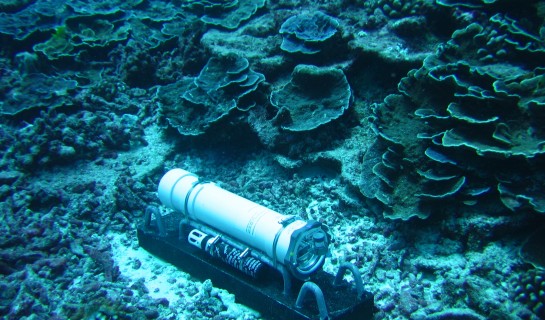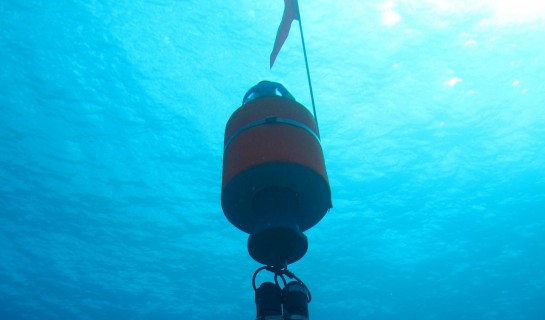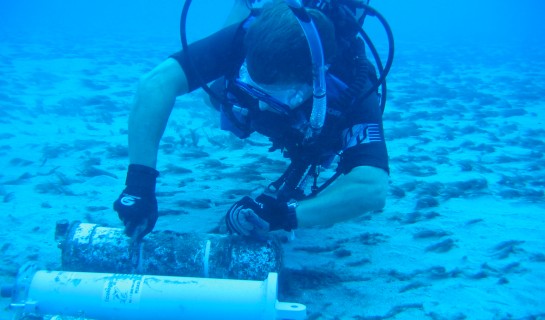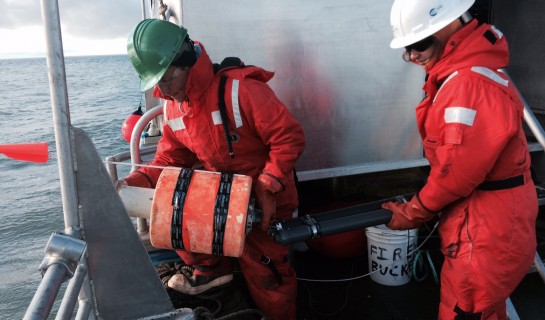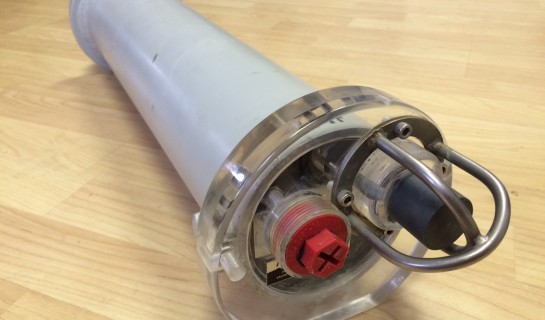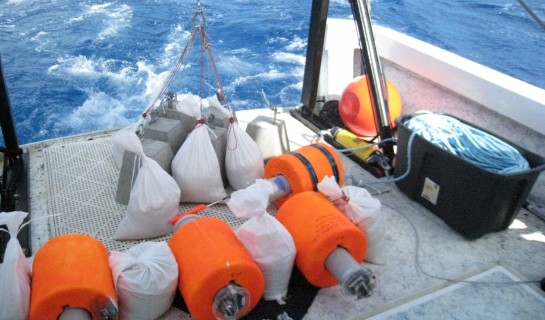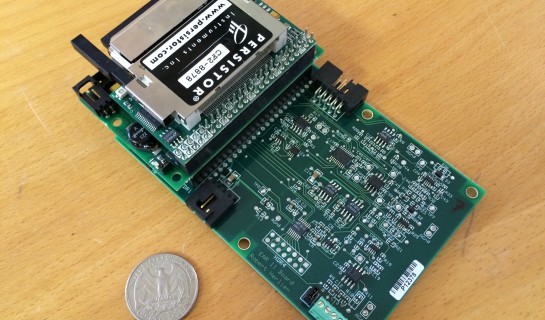Ecological Acoustic Recorder (EAR)
The EAR is a digital (16-bit), low power acoustic recording system designed for long-term monitoring of natural and anthropogenic sounds in aquatic habitats. OSI produces, uses and leases two EAR models (EAR I & EAR II) in three housing configuration manufactured by The Sexton Corporation: a shallow-water version that is diver-deployed to depths < 40 m, a deep-water version that can be deployed to a depth of 500 m and an Xtra-deep version deployable to 999 m. Both models use a Persistor CF2 microprocessor and can be programmed in a variety of ways in order to be deployed for days, months or years at a time.
EAR I:
The EAR I records the ambient sound field on a duty cycle and stores the recordings on an onboard 160 or 320 Gb disk drive. The EAR I has a maximum sampling rate of 80 kHz and maximum recording duty cycle of 66% (e.g. 2 min ‘on’ 1 min ‘off’). Recordings are initiated in two ways: on a software-regulated duty cycle schedule and (optionally) on an analog start trigger set to a broadband acoustic energy threshold that can be use for detecting and recording transient sounds (e.g. vessel engine noise) between duty cycled recordings. A technical description of the EAR I is given in:
Lammers, M.O., Brainard, R.E. and Au, W.W.L., Mooney, T.A. and Wong K. (2008). “An Ecological Acoustic Recorder (EAR) for long-term monitoring of biological and anthropogenic sounds on coral reefs and other marine habitats.” J. Acoust. Soc. Am. 123:1720-1728. DOWNLOAD PDF
EAR II:
The EAR II is a re-designed version of the EAR I system released in 2014. The EAR II offers the same functionality as the EAR I, with the following added capabilities:
- A maximum sampling rate of 125 kHz.
- Continuous recording to Compact Flash (CF) memory or a Solid State Drive (SSD) up to 256 Gb.
- Duty-cycled recording to CF or a hard disk drive (HDD) up 500 Gb.
- A high-frequency (> 20 kHz) event trigger for recording transient clicks (e.g. dolphin sonar) between duty-cycled recordings.
- Lower power consumption.
Four ways to obtain EARs and EAR data:
EAR Lease (with option to own) – For users who wish to work with the EAR, but do not require data analysis support or assistance with report/manuscript preparation. The EAR unit is leased from OSI and is returned upon completion of the lease period. Optionally, ownership of the EAR can be transferred to the user following an extended lease period.
Project contract – For institutions or agencies interested in an acoustic monitoring product. One or more EARs are leased daily or monthly and are deployed at specified locations by OSI staff or partners. OSI is contracted to analyze the data and produce a report detailing the results.
Project Collaboration – A collaborative agreement can be created when the user’s research objectives are matched with OSI’s interests. The user pays a reduced fee for the long-term use of the EAR. OSI provides data analysis guidance and training (if requested), but the user is responsible for all data products. Presentations and publications are authored jointly. The EAR unit is returned to OSI at the end of the collaboration period.
Student Collaboration – A lease agreement is available for students enrolled in a Masters or PhD program intending to use the EAR(s) for their thesis/dissertation work. The same terms as the Project Collaboration apply, but lease renewal fees are waived for the duration of the data collection period.
For cost information please contact Sandy Yarbrough (syarbrough@oceanwidescience.org)
Could not save XML file
Could not save marker XML file (/home/content/81/3815881/html/cms/wp-content/uploads/wp-google-maps/18markers.xml) for Map ID 18

